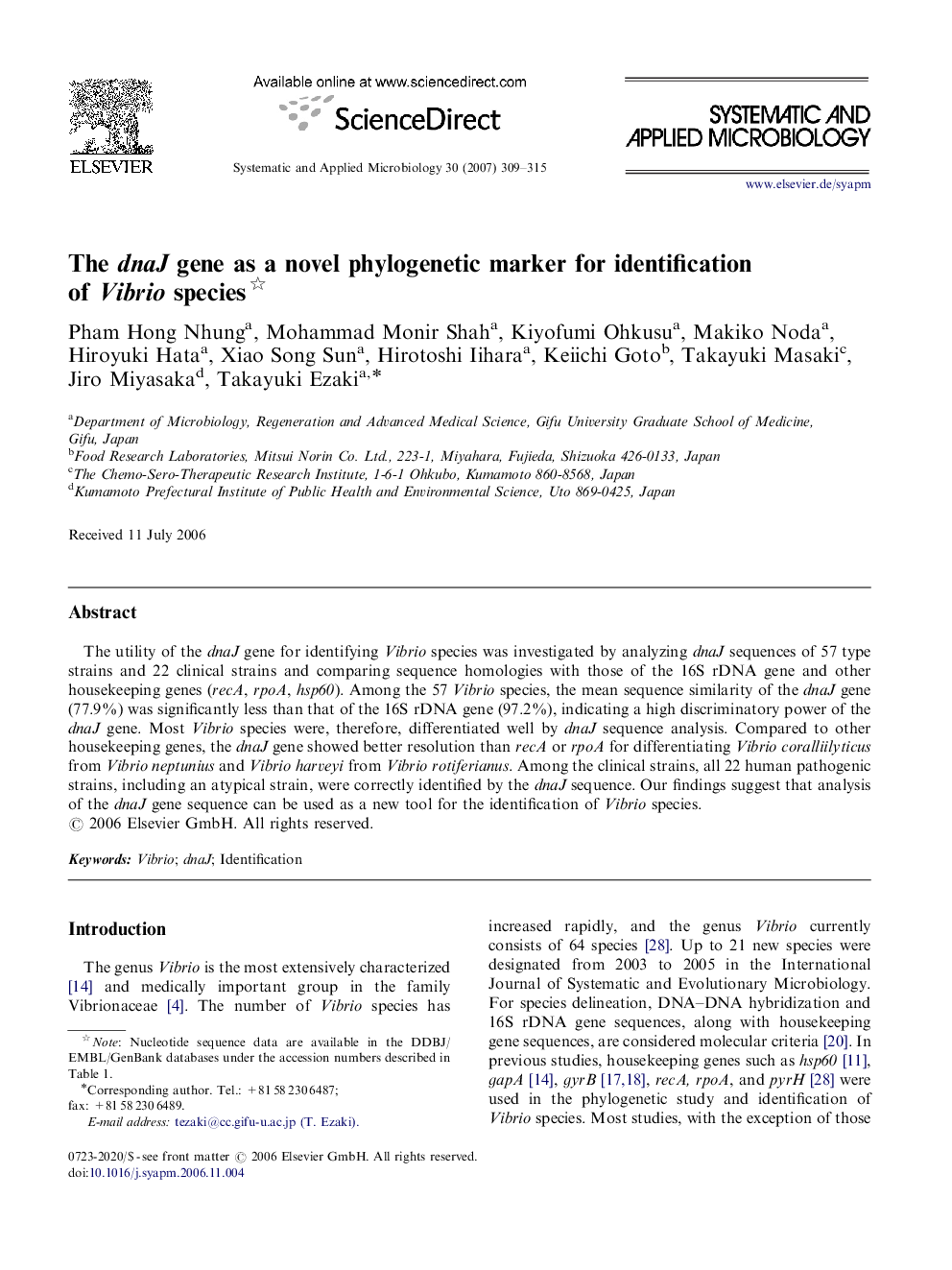| Article ID | Journal | Published Year | Pages | File Type |
|---|---|---|---|---|
| 2063444 | Systematic and Applied Microbiology | 2007 | 7 Pages |
The utility of the dnaJ gene for identifying Vibrio species was investigated by analyzing dnaJ sequences of 57 type strains and 22 clinical strains and comparing sequence homologies with those of the 16S rDNA gene and other housekeeping genes (recA, rpoA, hsp60). Among the 57 Vibrio species, the mean sequence similarity of the dnaJ gene (77.9%) was significantly less than that of the 16S rDNA gene (97.2%), indicating a high discriminatory power of the dnaJ gene. Most Vibrio species were, therefore, differentiated well by dnaJ sequence analysis. Compared to other housekeeping genes, the dnaJ gene showed better resolution than recA or rpoA for differentiating Vibrio coralliilyticus from Vibrio neptunius and Vibrio harveyi from Vibrio rotiferianus. Among the clinical strains, all 22 human pathogenic strains, including an atypical strain, were correctly identified by the dnaJ sequence. Our findings suggest that analysis of the dnaJ gene sequence can be used as a new tool for the identification of Vibrio species.
